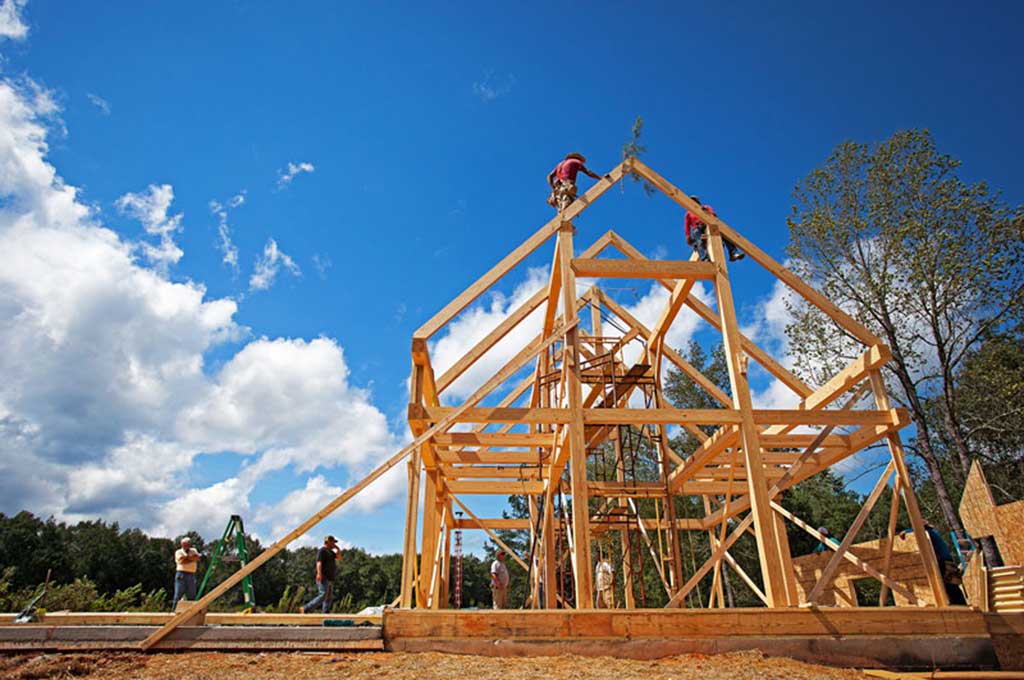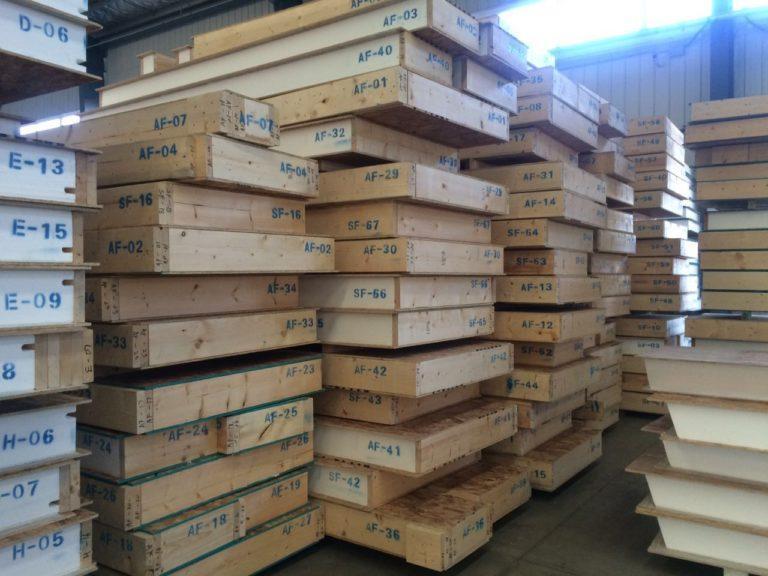
Green Timber Frame Construction
Surveys indicate that home buyers would prefer to buy a home that’s eco-friendly, especially in the custom home market. If you’re passionate about living your life as environmentally friendly as possible, then a timber framed home from Woodhouse is the perfect solution. Our timber frame homes and commercial projects are crafted with three guiding principles: sustainability, efficiency and longevity.
Since modern timber frame homes use substantially less wood than conventional stick frame construction, we are able decrease the need to harvest trees and increase forest sustainability. An added environmental benefit is that the carbon in the wood of our frames is taken out of circulation for the life of the home, which can be centuries if the home is maintained.
Upcycled Byproducts
A byproduct of our careful craftsmanship is wood waste, which we donate to our community. Sawdust is given to local farmers to use as animal bedding. Scrap timber is also given away for firewood. Woodhouse also routinely gives back to the community with pro-bono builds, including such recent projects as the design and timber frame craftsmanship for a local high school and a deluxe tree house with a zipline for a young girl losing her sight to glaucoma.
Reduced Construction Time
When you are perusing timber frame house plans, timber frame home prices or timber frame packages, either ours or our competitors, pay close attention to how the frames are enclosed. Woodhouse exclusively uses structural insulated panels or SIPS.
SIPs consist of a rigid foam insulation core bonded between two layers of rigid oriented strand board (OSB) sheathing. SIPs offer a plethora of benefits for the homeowner, including increased structural strength, unmatched energy efficiency and reduced construction time, saving you money. They come in varying thicknesses and R-values up to 72.
Better Air Quality
SIPs can reduce heating and cooling costs by up to 75% compared to stick and batt construction. This allows for decreased consumption of fossil fuels, which ensures comfort without sacrificing the environment. SIPs positively impact a structure’s carbon footprint and reduce greenhouse gas emissions, helping to save fossil fuels.
A number of environmental and green industry standards go into the creation of SIPs, with special attention to sustainability, indoor air quality and reduced waste. For example, the OSB used in SIPs is made from fast-growing, renewable softwood and hardwood species, such as pine, poplar and aspen. These species are harvested from managed forests.
Additionally, SIPs create an extremely airtight enclosure, which makes it easy to control and maintain a structure’s indoor air quality, which is good news if you suffer from allergies. Plus. It prevents heat loss through your house’s thermal envelope.
Woodhouse uses SIPs that have earned Forest Stewardship Council (FSC) Chain of Custody certification from Scientific Certification Systems, confirming that materials are harvested from well-managed forests. This designation contributes valuable points for LEED certification (Leadership in Energy and Environmental Design) or to meet National Association of Home Builders’ Green Building Standard.
How to Build a Green Home
Choose an experienced green builder to turnkey your home and help you meet your eco-friendly goals. Choose the most energy-efficient windows and doors that your budget can afford. Toilets, showers and sinks should all be low flow.
Invest in premium flooring materials, such as cork, bamboo or reclaimed wood. They are better for the environment than hardwood, carpet, or cheaper materials like vinyl. Carpets and padding tend to emit harmful compounds. Recycled glass countertops require less resources to produce than granite countertops.
More Eco-Friendly Smart Home Tricks
- Install solar panels to generate your own power and save money on your electric bill. Smart appliances, such as washing machines, can be programmed to operate when the sun is shining and your system is producing energy.
- Install a heat pump—ground-source, air-source, or water-source—to efficiently heat and cool your home. Heat pumps move heat from one place to another instead of traditional combustion appliances. They increase its efficiency by using the ground or even a pond as your heat exchanger.
- Insulate your hot water pipes and install a hot water recirculating pump. A recirculating pump provides instant access to hot water by slowly pumping water through your home’s pipes. It also reduces wasted water that would have went down the drain while you waited.
- Install a smart thermostat, such as an ecobee or Nest. Smart thermostats learn your habits and automatically program a heating and cooling schedule. They will even suggest methods for saving more energy by reducing air conditioning when you’re not home.
- Install a PUR Bluetooth Ultimate Faucet Filtration System. It will reduce 99% of lead and other contaminates, while being able to track water and filter use with your cell phone.
- Replace incandescent and fluorescent lightbulbs with LED equivalents. LEDs can be bought in a variety of bulb shapes, lighting color, and light outputs. LEDs use less electricity and last five times longer than older bulbs.
Building green is no longer just an alternative way to build. It’s now a cost-effective approach as well. The team at Woodhouse can help you realize your dream, for less.





